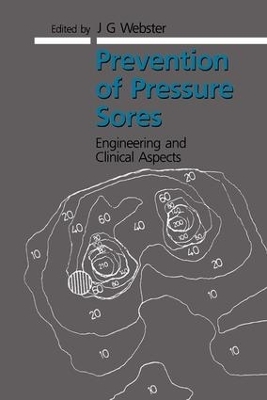
Prevention of Pressure Sores
Institute of Physics Publishing (Verlag)
978-0-7503-0099-5 (ISBN)
- Lieferbar (Termin unbekannt)
- Versandkostenfrei innerhalb Deutschlands
- Auch auf Rechnung
- Verfügbarkeit in der Filiale vor Ort prüfen
- Artikel merken
J.G. Webster
Preface, 1 The Cause of Pressure Sores,1.1 Incidence of pressure sores, 1.2 Description of tissues, 1.3 Stages of development, 1.4 Insufficient tissue perfusion, 1.5 Contribution of mechanical forces, 1.6 Contribution of related factors, 1.7 Spinal cord injured persons, 1.8 Study questions 2 Pressure Distribution in Tissue, 2.1 Soft tissue physical model, 2.2 Computer model, 2.3 Deep pressure from skin pressure, 2.4 Depth where pressure sore originates, 2.5 Measuring skin blood flow, 2.6 Pressure distribution at different locations, 2.7 Study questions, 3 Signs of Pressure Sores Basel Taha, 3.1 Early warning signs, 3.2 Pressure sore risk assessment, 3.3 Objective evaluation of skin status, 3.4 Study questions, 4 Behavior to Prevent Pressure Sores, 4.1 Able-bodied persons, 4.2 Spinal cord injured persons, 4.3 Aged persons, 4.4 Operating table, 4.5 Pressure management team, 4.6 Patient compliance outside institution, 4.7 Study questions, 5 Seat Cushions, 5.1 Cushion types and materials, 5.2 Methods of design, 5.3 Cushion interface conditions, 5.4 Objective test methods for evaluation, 5.5 Subjective methods for evaluation, 5.6 Study questions,6 Other Support Surfaces, 6.1 General considerations, 6.2 Wheelchair design, 6.3 Hospital bed, 6.4 Operating table, 6.5 Bed traction, 6.6 Spinal board, 6.7 Study questions, 7 Complex Pressure Relief Methods, 7.1 Alternating pressure devices, 7.2 Airbeds, 7.3 Water beds, 7.4 Sand bed, 7.5 Assisted turning beds, 7.6 Net suspension bed, 7.7 Pressure distribution on different beds, 7.8 Automated wheelchair seats, 7.9 Study questions, 8 Bladder Pressure Sensors, 8.1 Sensor specification, 8.2 Spatial distribution, 8.3 Bladder sensors with built-in switch, 8.4 Bladder sensors without built-in switch, 8.5 Evaluation, 8.6 Study questions, 9 Conventional Pressure Sensors, 9.1 General considerations, 9.2 Conductive polymer pressure sensors, 9.3 Semiconductor strain gages, 9.4 Metal strain gages, 9.5 Capacitive pressure sensors, 9.6 Optoelec
| Erscheint lt. Verlag | 1.6.1991 |
|---|---|
| Reihe/Serie | Series in Medical Physics and Biomedical Engineering |
| Verlagsort | London |
| Sprache | englisch |
| Maße | 156 x 234 mm |
| Gewicht | 521 g |
| Themenwelt | Informatik ► Grafik / Design ► Digitale Bildverarbeitung |
| Medizin / Pharmazie ► Physiotherapie / Ergotherapie ► Orthopädie | |
| Technik ► Medizintechnik | |
| ISBN-10 | 0-7503-0099-X / 075030099X |
| ISBN-13 | 978-0-7503-0099-5 / 9780750300995 |
| Zustand | Neuware |
| Haben Sie eine Frage zum Produkt? |
aus dem Bereich


